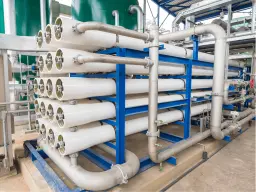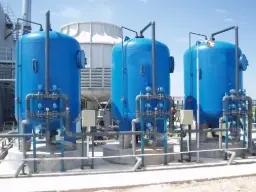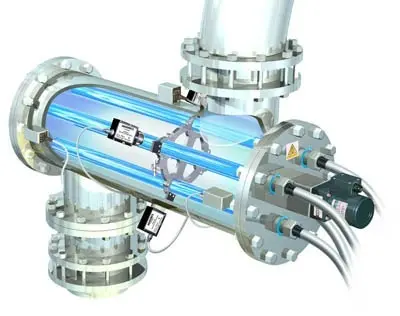Water Treatment for Food Processing Applications
Water is a key resource in the food processing industry, involved in nearly every stage of production—washing raw materials, cooking, ingredient mixing, and final product preparation. In many facilities, water is also used for equipment cleaning, cooling, and steam generation. Because water is such a critical component, its quality and consistency directly impact the safety, taste, texture, and shelf life of food products. For instance, vegetables and fruits washed with contaminated water may introduce harmful bacteria into the processing line. Similarly, using water with high mineral content can alter flavors, reduce the effectiveness of heat transfer, and potentially cause scaling in boilers or cooking equipment.
Food processors are keenly aware of the need for stringent quality control measures and adherence to local and international regulations, such as the FDA or EU directives, which often specify water quality standards. Beyond compliance, there is also a strong consumer demand for high-quality, safe, and minimally processed foods. Investing in robust water treatment systems allows manufacturers to maintain consistent purity levels, minimize the risk of contamination, and optimize operational efficiency. Filtox specializes in providing industrial-grade water treatment solutions tailored to the food processing sector. Our technologies help ensure that each drop of water used in washing, cooking, or processing is meticulously purified to support product integrity, safeguard consumer health, and foster a responsible corporate image.
Related Products for Food Processing Applications

Activated Carbon Filters
Activated Carbon efficiently absorbs chlorine, organic compounds, and other substances that can cause off-tastes or odors. It’s particularly valuable for preserving the natural flavor and aroma of foods. Additionally, removing chlorine helps maintain the color and texture of delicate ingredients.

Reverse Osmosis (RO)
Reverse Osmosis is designed to remove a wide range of contaminants, including dissolved solids, heavy metals, and certain microorganisms. By forcing water through a semi-permeable membrane, RO ensures a high level of purity essential for washing and rinsing procedures, as well as for formulating consistent recipes.

Water Softener
Water softening units help manage water hardness by removing excess calcium and magnesium. This not only prevents scaling and corrosion in processing equipment but also contributes to consistent cooking and product texture, especially in processes like canning or baking.

UV Disinfection
Ultraviolet (UV) disinfection employs UV light to inactivate bacteria, viruses, and other pathogens. This method is chemical-free, ensuring that no residual byproducts affect the taste or quality of processed foods. UV technology is widely used in wash-down water and final rinse applications.
Advantages of These Systems
- Enhanced Product Safety
Eliminating microbial and chemical contaminants reduces the risk of foodborne illnesses. Consistently pure water helps ensure that produce and other raw materials are washed thoroughly without introducing harmful pathogens. - Quality Preservation
Certain taste and aroma compounds can be easily tainted by impurities or chlorine in water. High-quality water supports the retention of natural flavors, colors, and textures, thereby improving overall product appeal. - Regulatory Compliance
Meeting national and international standards for food safety (such as HACCP, FDA, or EU guidelines) becomes more straightforward with robust water treatment. Regular testing and maintenance further ensure ongoing compliance. - Reduced Equipment Maintenance
Scale and mineral deposits can damage boilers, heat exchangers, and other critical machinery. Optimized water treatment extends equipment life and reduces downtime, contributing to a more efficient production line.
Challenges and Solutions
- Challenge: Biological Contamination
Solution: UV Disinfection offers a chemical-free approach to deactivating bacteria, viruses, and fungi in processing water. When combined with thorough sanitation protocols, it effectively reduces the risk of microbial growth. - Challenge: Scale and Hard Water
Solution: Ion Exchange or Reverse Osmosis systems can remove hardness minerals like calcium and magnesium, preventing scale buildup on critical surfaces. This preserves heat transfer efficiency and reduces wear and tear on equipment. - Challenge: Residual Chlorine and Unpleasant Odors
Solution: Activated Carbon Filtration removes chlorine and other organic compounds that can affect taste, smell, and color. This is particularly important in ready-to-eat or minimally processed products where flavor must remain unaltered. - Challenge: High Water Usage and Wastewater Management
Solution: Many food processing plants consume large volumes of water. Filtox helps clients implement wastewater recovery strategies, enabling the reuse of treated water for non-potable applications like equipment cleaning or cooling, thus reducing overall water consumption and environmental impact. - Challenge: Achieving Consistent Product Quality
Solution: Reverse Osmosis and complementary systems stabilize water parameters, ensuring uniformity in recipes and processes. With consistent water quality, manufacturers can maintain standardized cooking times, flavor profiles, and textures across all product batches.
Frequently Asked Questions
- Is Reverse Osmosis always necessary in food processing?
It depends on the specific needs and local water supply. While not mandatory for all applications, RO is highly recommended when purity and flavor consistency are critical, such as in infant food or high-end product lines. - How does UV Disinfection compare to chemical sanitizers?
UV disinfection is a physical process that leaves no residue or byproducts, making it ideal for preserving sensitive flavors and textures. Chemical sanitizers can be effective but may introduce taste or odor concerns. - Does Activated Carbon remove all contaminants?
It removes chlorine, some organic compounds, and volatile chemicals effectively. However, for broader contaminant removal, combining activated carbon with other treatments like RO is recommended. - Will Ion Exchange affect the nutritional minerals in food?
Ion Exchange primarily targets hardness minerals in water, not those inherent in food ingredients. The process does not strip essential nutrients from the foods themselves. - How often should water quality be tested?
The frequency depends on production scale and regulatory requirements. Many plants perform daily or weekly tests, especially when producing products with strict safety standards.